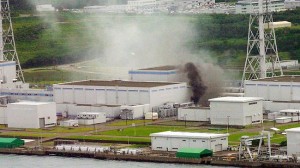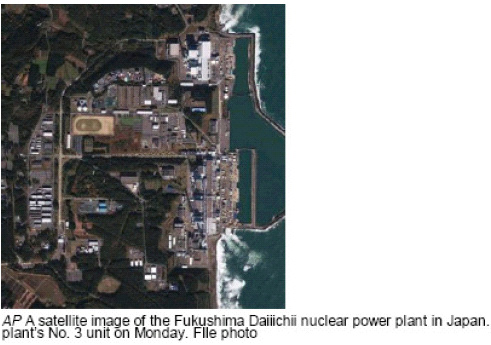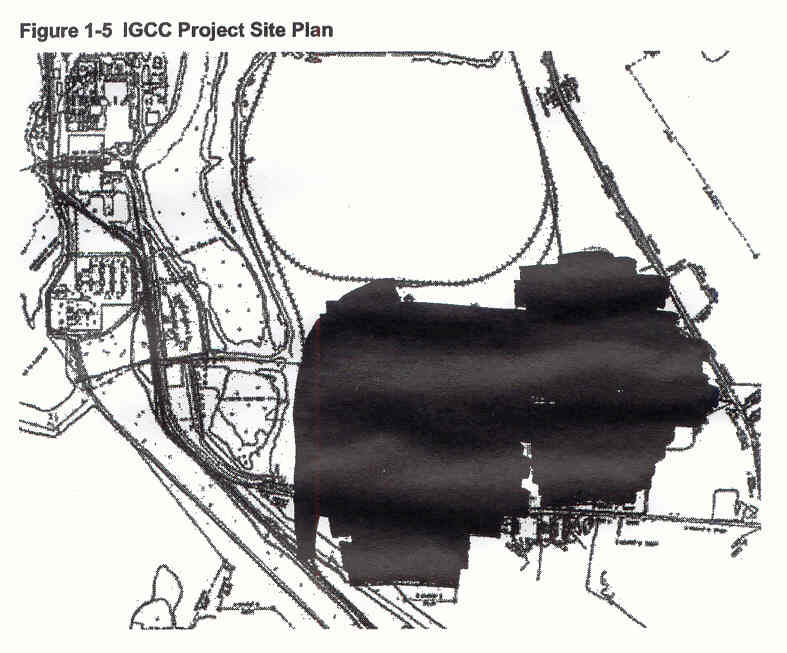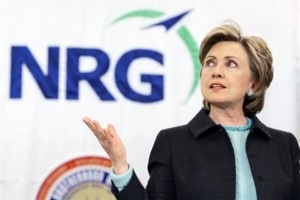Boyd puts out nuclear welcome mat
December 22nd, 2011
AAAAARGH, there goes PUC Commissioner (former chair) David Boyd putting out the welcome mat for nuclear power, nuclear plants and nuclear waste. This we DON’T need…
And note that he’s claiming that the hurdles are “costs” and “public perceptions.” Ummmm… where’s safety? Minnesota is home to a Fukushima Dai-ichi GE nuclear reactor, located in Monticello, north, upriver and upwind from the metro.
Safety, anyone? But then, I’ve been to the Appellate Court about the responsibility of the PUC for assuring that the utilities provide “safe” electricity, and we were tossed out. Power Line Task Force v. Public Utilities Commission
THE HURDLES OF COSTS AND PUBLIC PERCEPTIONS
Published In: EnergyBiz Magazine November / December 2011
David Boyd
THE FUTURE OF THE U.S. ELECTRICITY PORTFOLIO is a complex matter that asks the industry to find a path forward that acceptably balances many different factors. Once one acknowledges that every generating technology carries physical, financial and environmental risks, the conversation can begin in an intellectually honest manner. In the case of the nuclear industry, the issues frequently discussed are the costs of new construction, safety and fuel management.
Why would a utility consider nuclear power when public opinion on the risks and rewards appears to swing more significantly than it does for other technologies? A response requires taking stock of the broader situation as it stands today, and then focusing on the nuclear industry specifically.
We are entering a period where utilities will retool their generation fleets for the next 40 or more years. Construction will need to be phased over time, and the optimum portfolio could change with the passage of time. Policy drivers of this build-out include electricity that is reasonably priced, increasingly low carbon and as clean as possible, together with North American Electric Reliability Corp. and Federal Energy Regulatory Commission mandates for reliability. In addition, the evolving domestic gas supply, economics and the anticipated U.S. Environmental Protection Agency mandates dictate that coal use will be reduced in the near term. Some argue that this translates into a natural-gas dominated electricity sector. While I accept a movement to natural gas in the near term, that fuel will not yield the complete decarbonization of the electricity sector necessary to meet, for example, the goal to reduce total greenhouse gas emissions to 80 percent below 2005 levels by 2050, as per a Minnesota statute, among other state and federal guidelines. While we have made significant progress with wind and other renewables that support the greenhouse gas targets, questions remain regarding the cost and reliability of integrating very large quantities of renewable energy into the grid.
So is there is a place for new nuclear in our generation fleet? Advocates suggest that the answer is yes, with careful consideration of specific issues. Aside from hydro, nuclear plants are the only low- or no-carbon baseload option of significant scale for many states. Nuclear is also a part of a balanced generation portfolio that is prized by many – but at what cost, at what scale and under what circumstances? If the goal is to maintain the present 20 percent of electricity generation from nuclear, we will need to replace 40 reactors whose operating licenses expire by 2030.
There are a number of hurdles that remain for expansion of nuclear power in the United States. Chief among these is the capital cost of construction. Despite projections that the levelized cost of electricity from newly constructed plants will be competitive with other generating technologies, the project costs are so high that most utilities would be betting their futures by pursuing a new reactor. In addition, the first movers would need to develop new institutional knowledge and confront the preparedness of our domestic workforce. This could add significant costs, even though the effect would benefit those who might follow. Although the federal government has authorized loan guarantees to help overcome these barriers, they are significant issues that limit early movers in the industry.
Fukushima Daiichi update
March 26th, 2011
The saga at the Fukushima Daiichi nuclear site continues, and it doesn’t seem to be getting any better, officials continue to report the situation as “grave.”
Radiation doses spread unequally – Daily Yomiuri Online
TEPCO workers not warned of radiation risk- Daily Yomiuri Online
Iodine 1,250times over limit – Daily Yomiuri Online
Radiation spikes in sea off Fukushima plant – Market Watch
Radioactivity rises in seawater near Japan’s Fukushima Daiichi nuclear plant – Washington Post
Japan PM calls situation at nuclear plant “grave” – Business Week
Nuclear? I don’t think so…
November 6th, 2010
A little birdie sent this about “our Stevie,” former Minnesota Asst. A.G. Steve Corneli, now a Senior V.P. at NRG, is in the news.
Steve Corneli — he was the one who “clarified” that nuclear stranded costs (BIG BIG $$$$ which Northern States Power was claiming were due in the event of deregulation which they were fighting for) was really stranded ASSETS! Yes, dear readers, you’ve heard this before, but if you haven’t read this report, from the dark ages of 1997, please do, because incorporating this shift in perspective on stranded costs can free your soul!
And you may remember that dreadful idea on his watch that NRG should put an IGCC (coal gasification) plant in Delaware at its Indian River site with THIS, below, as a site plan, I kid you not:
Oh, my, that instills confidence, doesn’t it!
And so what’s he up to now? He’s pushing nuclear power, and next to him, there’s the Obama administration pushing nuclear power… and they wonder why we’re “disappointed?”
The fate of nuclear power after midterm elections
by Brian Wheeler, Associate Editor, Power-Gen Worldwide
In the largest shift of power since 1948, Republicans took over the U.S. House on midterm election night. And the nuclear industry could benefit from the Republican takeover as part of the clean energy legislation.
In a statement released the morning of Election Day, Don Gillispie, CEO of Alternate Energy Holdings, Inc., said that if Republicans won, the other big winner would be nuclear power. Well, we do know that Republicans have won the House and have made up ground in the Senate as well, even though Democrats still hold the majority.
Historically there has been more support from Republicans for nuclear power. But Steve Corneli, senior vice president of market and climate policy for NRG Energy, said there is an increasing awareness from Democrats that nuclear power can be an important part of energy independence and a zero-carbon emission future.
Michigan representative Fred Upton, like many Republicans, is a supporter of nuclear power in the U.S. Upton is also a strong contender to head the House Energy and Commerce Committee; the committee that sees over the national energy policy.
“Through a greater commitment to nuclear, we have a unique opportunity to cut greenhouse gases, provide stability to our electrical supply and create jobs,” Upton told Reuters.
John Boehner (R-OH) is expected to take over as the new Speaker of the House and is also a strong proponent of nuclear power.
“The new Congress will be more pro-nuclear than any Congress we’ve seen in decades,” said Gillispie.
And President Obama continues to promote nuclear power, too.
“There’s been discussion about how we can restart our nuclear industry as a means of reducing our dependence on foreign oil and reducing greenhouse gases,” Obama said during a speech the day after the midterm elections. “Is that an area where we can move forward?”
As of now, that seems to be possible. The White House has requested an additional $36 billion in federal loan guarantees for new nuclear plants and it seems that Republicans are likely to support the measure, even with a big focus during the campaign on reducing government spending.
But Corneli said the interesting part is that the important policy measures that are needed to help jump start the nuclear renaissance are the ones with the lowest cost to federal treasury, and those are the federal loan guarantees, “which really don’t cost the treasury anything.”
“Essentially it is self-financing,” he said. “It seems like the stars could be lining up right now for a boost in nuclear power development.”
Corneli said nuclear is established and the existing fleet of nuclear reactors provide the lowest cost power currently on the grid, but there hasn’t been a new plant built in roughly 30 years.
“We actually think that nuclear power has the potential to be the real foundation of clean energy technology,” he said.Gillispie seems to agree.
Minnesota’s nuclear moratorium — gone?!?!?!
May 8th, 2010
I read with horror news of Rep. Bill Hilty’s amendment eliminating the moratorium on new nuclear generating plants that passed in a House Ominous Bill this week. WHAT ARE THESE YAHOOS THINKING? The Senate already approved it, and now the House… and I just can’t see Pawlenty doing anything but signing it with glee.
(sudden feeling of ice picks going through temples… buried in brain… electricity applied…)
AAAAAAAAGH!
Is this the “price” of the rollback of exemptions of utilities from eminent domain laws? Is it an attempt to look like they’re repealing it when “conditions” mean it won’t happen? (like those that said Obama really doesn’t mean what he’s saying about coal gasification or transmission, he knows better) Is it more of the same deal-making that took the Renewable Development Fund away from PrairIe Island Indian Community, or the enviro sell-outs that gave us the 2005 Transmission bill? Minnesota’s second nuclear waste storage facility at Monticello, now two piles piling with no plan in sight, PERMANENT?
What I’m hearing about this from various little birdies….
… is NOT encouraging — ooooohhhhhhh do I have a headache…
… apparently NO ONE OBJECTED!
NO ONE OBJECTED?!?!?!?!
AAAAAAAAGH!
Here’s the bill as it is on the Senate site:
Here’s how Rep. Bill Hilty, Chair of House Energy, amended it:
Page 4, after line 11, insert:
“Sec. 4. [216B.1695] NUCLEAR POWER PLANT; COST RECOVERY.
(a) The commission may not allow any of the following costs attributable to the construction of a nuclear generating plant begun after July 1, 2010, to be recovered from Minnesota ratepayers until the plant begins operating at a monthly load capacity factor of at least 85 percent:
(1) planning, design, safety, environmental, or engineering studies undertaken prior to construction; or
(2) the costs of obtaining regulatory approval, including permits, licenses and any other approval required prior to construction from federal, state and local authorities.
(b) The commission may not allow any of the following costs attributable to the construction of a nuclear generating plant begun after July 1, 2010, to be recovered from Minnesota ratepayers:
Journal of the House – 98th Day – Thursday, May 6, 2010 – Top of Page 11584
(1) any construction costs exceeding the projected construction cost of the generating plant and any ancillary facility constructed by the utility to temporarily or permanently store nuclear waste generated by the plant, as identified in the utility’s certificate of need application submitted under section 216B.243;
(2) the costs of insuring the plant against accidents that exceed the cost of insurance for a fossil fuel plant of equivalent capacity; or
(3) contributions from the plant to provide and maintain local fire protection and emergency services to the plant in case of an accident.
(c) Except for regulatory costs of state agencies, no revenues from taxes or fees imposed by the state of Minnesota may be used to pay for any portion of the preconstruction, construction, maintenance, or operating costs of a nuclear generating plant, or to assume any financial risk associated with an accidental release of radioactivity from the generating plant or an ancillary facility constructed by the utility that owns the generating plant to temporarily or permanently store nuclear waste generated by the plant.
Sec. 5. Minnesota Statutes 2008, section 216B.243, subdivision 3b, is amended to read:
Subd. 3b. Nuclear power plant; new construction prohibited; relicensing. (a) The commission may not issue a certificate of need for the construction of a new nuclear-powered electric generating plant provided that the certificate of need application contains a separate estimate of preconstruction and construction costs that does not include any of the costs identified in section 216B.1695, paragraphs (a) and (b).
(b) Any certificate of need for additional storage of spent nuclear fuel for a facility seeking a license extension shall address the impacts of continued operations over the period for which approval is sought.”
Renumber the sections in sequence and correct the internal references
Way below is the list of yeas and nays, do send each of them a missive:
The ones who voted against it are the strangest set of bedfellows! But KUDOS TO THEM!
If you click on this to look at the whole back and forth with amendments, scroll to p. 11579 to start. Here’s the vote:
The bill was read for the third time, as amended, and placed upon its final passage.
Those who voted in the affirmative were:
Those who voted in the negative were:









